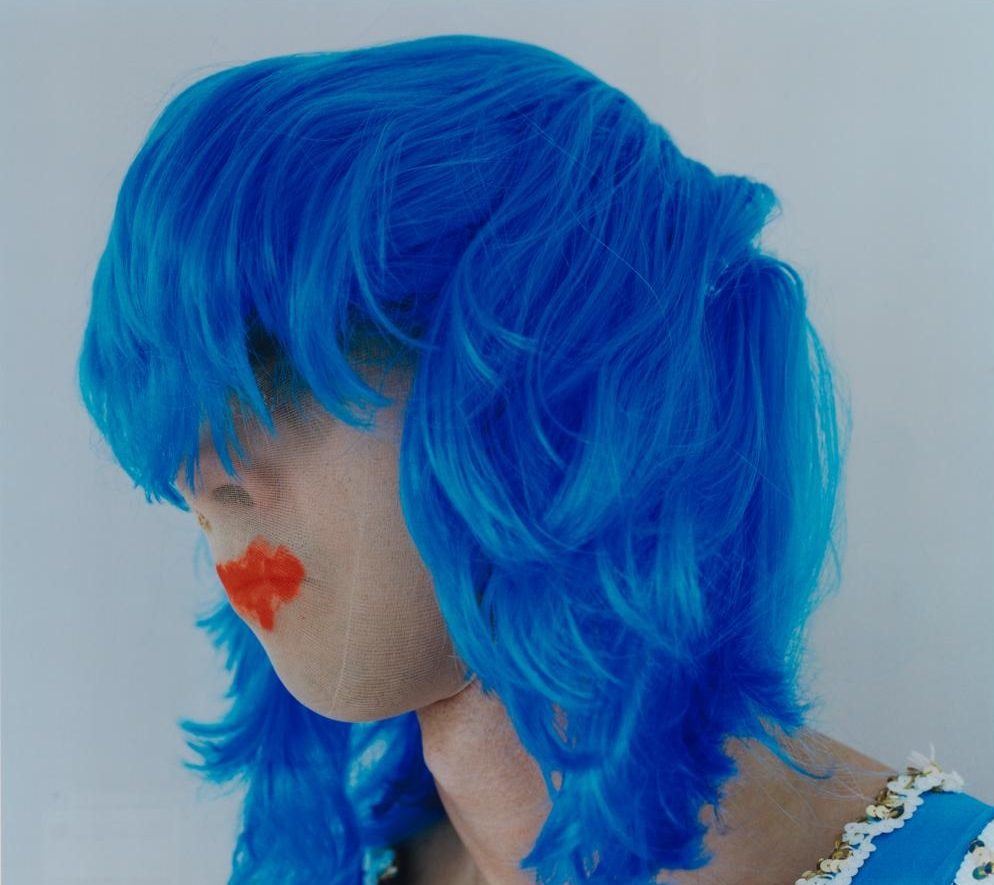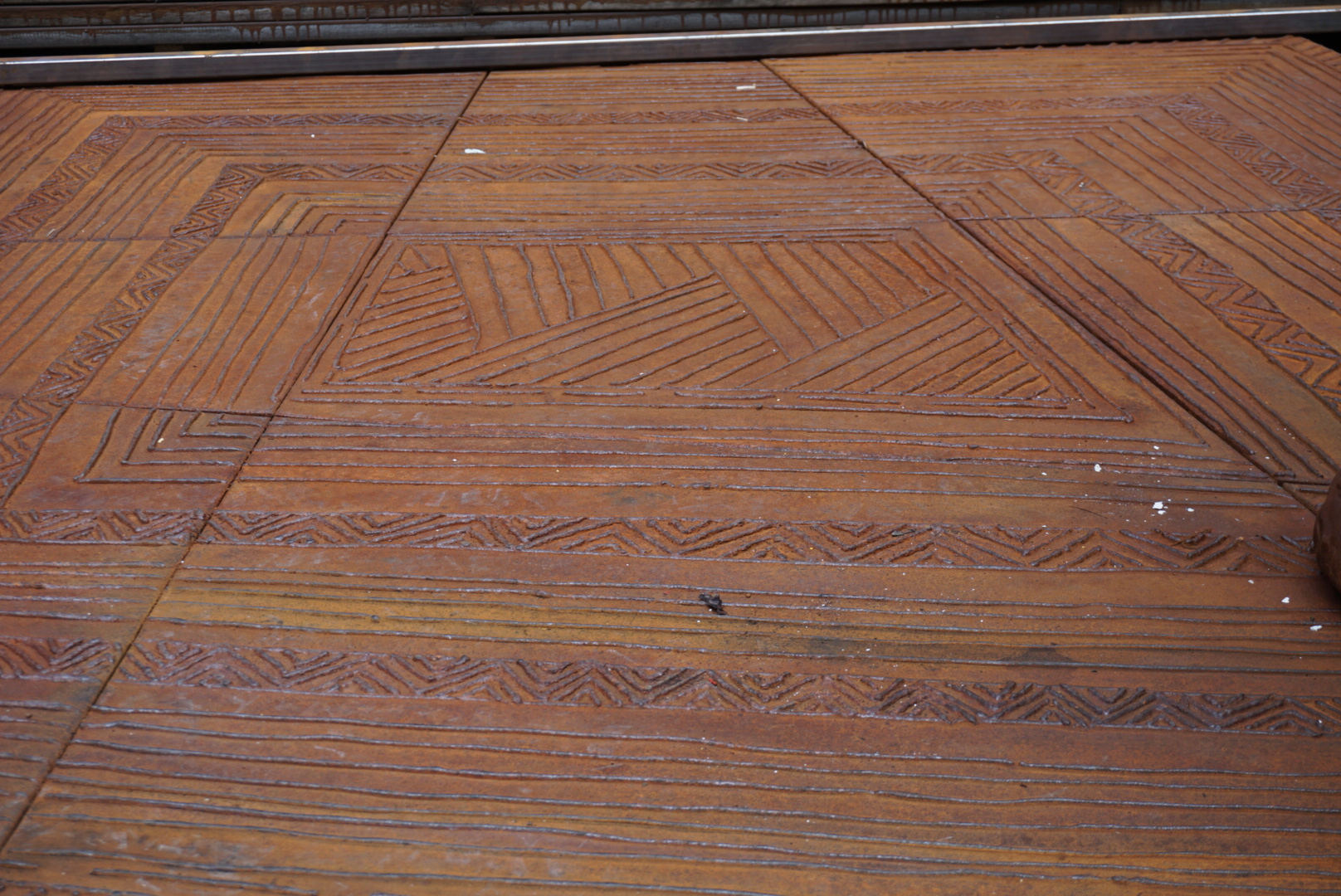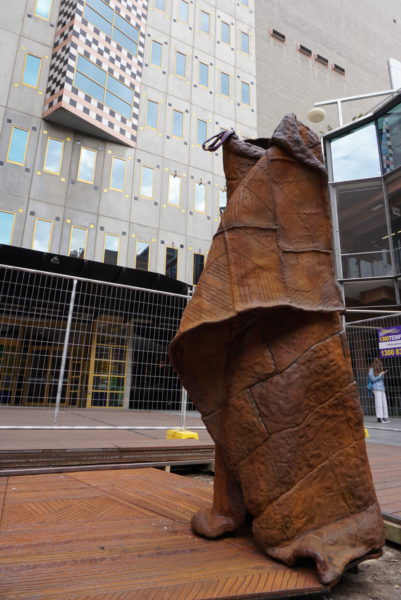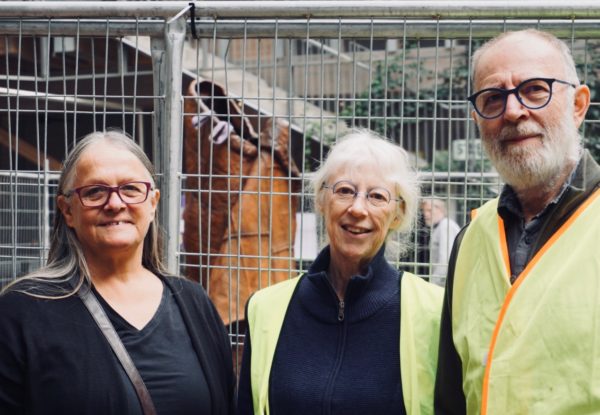
Exhibition13 Apr – 9 Jun 2018
Chaos & Order – 120 years of collecting at RMIT
Chaos & Order celebrates over 80 Australian and international artists in an ambitious survey of the RMIT Art Collection. Join us at the opening…

Wurrunggi Biik – The Law of the Land by artist Vicki Couzens, in collaboration with Hilary Jackman and Jeph Neale, is a new public artwork recently unveiled in Bowen Street on RMIT University’s city campus.
The 2.4 metre artwork in the form of possum skin cloak, made from cast iron, signifies a long-lasting spiritual connection to Country. RMIT Gallery media intern Bianca Viola Biamonti attended the installation of the artwork.

In an intimate square among the buildings of the university sits the 2.4 metre artwork. From the back, the artwork looks like a soft blanket, the colours are warm, but there is no body inside. I pause to reflect.
The artist is standing by her artwork, visibly satisfied with the effect of the piece. She is keen for me appreciate the work that was involved in the assembly process of the 30 pieces of iron, explaining how the pattern conveys a sense of softness.
Vicki is a Gunditjmara / Keerray Woorroong woman from the Western Districts of Victoria.
My first impression is that the artwork is a protest by the Aboriginal community against those who do not look at them, those who pass by, ignore them and go on as if no one were there.
As I think more about the work, I began to understand how important it is to communicate the presence of the Aboriginal culture that for years has been trying to make room for itself to be listened to and respected.
The public artwork is placed at a key thoroughfare on campus, and asks you – as an observer – to be watched. It creates a relationship between the observer and the observed; the sculpture looks at society and the way we look at the representation of Aboriginal culture.
I learn from the artist that the possum cloak in Aboriginal culture means to welcome; and I look again, this time with a more intimate feeling. This artwork makes me feel welcomed in this new city, where different cultures find harmony and there is a respect of multiculturalism.
I stand before the work, and take another look.
As a visitor to Melbourne, and new student to RMIT University, I interpret this artwork as a warm welcome to the different cultures that are part of the fabric of the university, wishing all a good start to the academic year.

I spoke to artist Vicki Couzens, who explained: “I am hoping the presence of the work will be evocative and emotive. The viewer standing there not knowing anything about it will be motivated enough to try to understand what they are feeling. Because I am wanting them to feel a sense of the spiritual. A sense of Aboriginal place and people and connecting to that feeling.”
According to the artist, the creation of the iron cloak was a labour intensive and time-consuming process, made possible by the collaboration with Jeph Neale and Hilary Jackman. The cloak is made of more than 30 pieces of iron skin which look like they’ve been sewn together; they were fused/merged, modelled, and incised with designs depicting stories of clan and Country.
The intention of the piece is to make an inquiry, to create an impact and to engage people and get them thinking.
“It’s not something that people can walk past and ignore,” said Hilary Jackman.
This Indigenous artwork connects past with present and is a fantastic opportunity for RMIT to build its presence and engagement with the Aboriginal community.
Story by Viola Bianca Biamonti, RMIT Gallery intern.